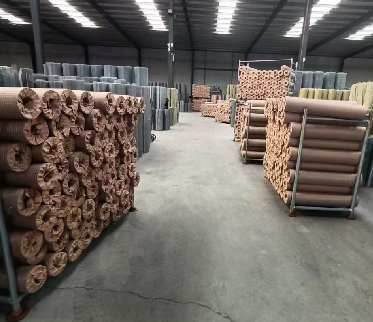Exploring the Versatility and Applications of Bulk Bag Containers in Various Industries
The Big Bag Container A Revolution in Bulk Storage and Transport
In today’s fast-paced world, efficiency is the name of the game. Businesses are constantly seeking innovative solutions to streamline their operations, reduce costs, and maximize productivity. One such solution that has gained immense popularity across various industries is the big bag container, also known as a bulk bag or FIBC (Flexible Intermediate Bulk Container). This remarkable product has transformed the way companies handle bulk materials, and exploring its features and benefits is essential for anyone involved in logistics, manufacturing, or agriculture.
What is a Big Bag Container?
A big bag container is a large, flexible bag made from durable materials, primarily woven polypropylene. It is designed to transport and store bulk quantities of goods, ranging from grains and seeds to chemicals and construction materials. Unlike traditional containers, which can be cumbersome and rigid, big bags offer a lightweight and collapsible alternative that can be easily transported and stored when not in use.
Key Benefits of Big Bag Containers
1. Versatility One of the standout features of big bag containers is their versatility. They can be tailored for various applications, accommodating different shapes and sizes of bulk materials. This adaptability makes them ideal for a wide range of industries, including agriculture, food processing, mining, and construction.
big bag container

2. Cost-Effectiveness Big bags are a cost-effective solution for transporting and storing bulk materials. They generally require less space than conventional containers, which leads to reduced shipping and storage costs. Additionally, their ability to hold significant quantities of materials—often between 500 kg to 3000 kg—means that companies can reduce the number of trips needed for transportation, further lowering logistics expenses.
3. Ease of Use The design of big bag containers is geared toward user-friendliness. They typically come with convenient lifting loops that facilitate easy loading and unloading. Many containers also feature discharge spouts, which simplify the process of releasing the material when it’s time for use. These features minimize handling time and decrease the risk of spillage or loss, significantly enhancing overall operational efficiency.
4. Safety and Environmental Impact Safety is crucial in any industry, and big bag containers help to improve workplace safety by reducing the risk of accidents associated with manual handling of bulk materials. Furthermore, many manufacturers are now producing eco-friendly big bags made from recyclable materials, contributing to more sustainable practices in businesses.
5. Storage Solutions Big bags are not only efficient for transportation but also serve as excellent storage solutions. Their sturdy construction ensures that materials remain safe and protected from environmental factors. When not in use, big bags can be collapsed and stored in a minimal amount of space, making them an ideal choice for businesses with limited storage capacity.
Conclusion
The big bag container represents a significant advancement in the field of bulk storage and transport. With their versatility, cost-effectiveness, ease of use, and positive impact on safety and the environment, it’s no wonder that they have become a staple in various industries. As businesses continue to seek smarter solutions to meet the demands of modern commerce, big bag containers stand out as a critical innovation that addresses both logistical challenges and sustainability goals. Embracing this technology can lead to improved operational efficiency, increased profitability, and a positive contribution to environmental conservation. In a world ever-evolving towards efficiency and sustainability, big bags are indeed paving the way for a smarter future.
-
The Versatility of Stainless Steel Wire MeshNewsNov.01,2024
-
The Role and Types of Sun Shade SolutionsNewsNov.01,2024
-
Safeguard Your Space with Effective Bird Protection SolutionsNewsNov.01,2024
-
Protect Your Garden with Innovative Insect-Proof SolutionsNewsNov.01,2024
-
Innovative Solutions for Construction NeedsNewsNov.01,2024
-
Effective Bird Control Solutions for Every NeedNewsNov.01,2024












